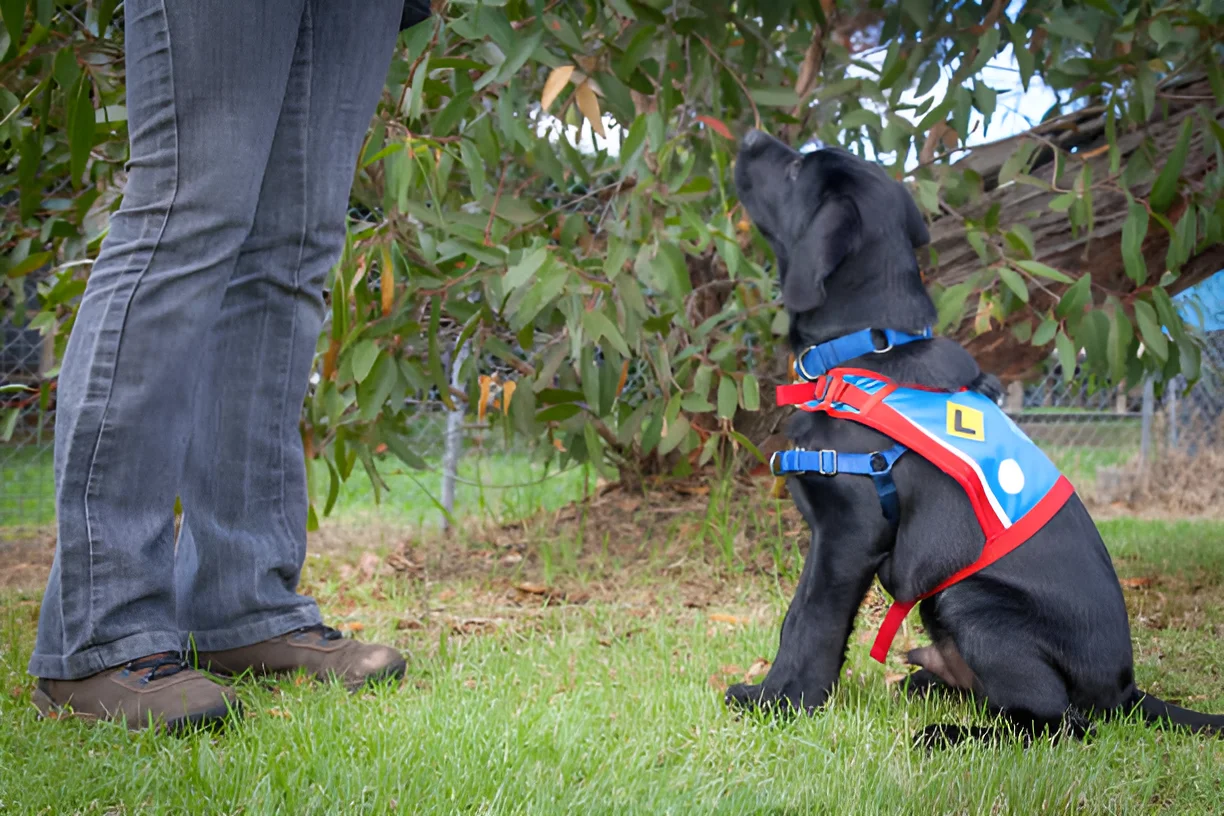Police use Labrador Retrievers (Labs) because of their exceptional scent detection abilities, intelligence, and versatility. These traits make Labs invaluable in various law enforcement roles, from detecting drugs and explosives to search and rescue missions.
Labrador Retrievers have a long history of working alongside humans. Originally bred in Newfoundland, Canada, Labs were used by fishermen to retrieve nets and catch fish that escaped from fishing lines. Their strong swimming abilities, intelligence, and trainability made them ideal working dogs. Over time, these traits were recognized by law enforcement agencies, leading to their widespread use in police work.
Key Traits That Make Labs Ideal for Police Work
1. Exceptional Scent Detection
Labs have an extraordinary sense of smell, which is one of the primary reasons they are used in police work. Their noses contain approximately 300 million olfactory receptors, compared to about 6 million in humans. This allows them to detect even the faintest scents, making them excellent at locating drugs, explosives, and other contraband.
- Drug Detection: Labs are commonly used in narcotics detection. They can sniff out a wide range of illegal substances, including marijuana, cocaine, heroin, and methamphetamine. Their ability to detect these substances even when they are hidden in vehicles, luggage, or buildings makes them invaluable in the fight against drug trafficking.
- Explosives Detection: Labs are also trained to detect explosives. Their keen sense of smell can identify various explosive compounds, helping to prevent potential terrorist attacks and ensure public safety.
2. Intelligence and Trainability
Labs are known for their intelligence and eagerness to please, which makes them highly trainable. They can learn a wide range of commands and tasks, and their ability to quickly adapt to new situations is crucial in police work.
- Obedience Training: Labs excel in obedience training, which is the foundation for all other types of training. Their ability to follow commands reliably ensures they can perform their duties effectively and safely.
- Specialized Training: Beyond basic obedience, Labs undergo specialized training for their specific roles. This can include scent detection, search and rescue, and even apprehension of suspects.
3. Versatility
Labs are incredibly versatile dogs, capable of performing a variety of tasks in different environments. This versatility makes them suitable for a wide range of law enforcement roles.
- Search and Rescue: Labs are often used in search and rescue missions due to their strong tracking abilities and endurance. They can locate missing persons in various terrains, including forests, mountains, and urban areas.
- Patrol and Apprehension: While not as commonly used for apprehension as breeds like German Shepherds, Labs can still be trained for patrol duties. Their friendly demeanor also makes them excellent community policing dogs, helping to build positive relationships between law enforcement and the public.
The Training Process for Police Labs
Training a Lab for police work is a rigorous and ongoing process. It begins with selecting the right dog, followed by extensive training to prepare them for their specific roles.
1. Selection
Not all Labs are suited for police work. The selection process involves evaluating puppies for traits such as confidence, curiosity, and a strong drive to work. Breeders who specialize in working dogs often provide puppies that have been bred for these characteristics.
2. Basic Training
The first phase of training focuses on basic obedience. This includes commands such as sit, stay, come, and heel. Labs must master these commands before moving on to more specialized training.
3. Specialized Training
Once basic training is complete, Labs undergo specialized training for their specific roles. This can include:
- Scent Detection: Training for scent detection involves teaching the dog to recognize and alert to specific scents. This is done through a series of exercises that gradually increase in complexity.
- Search and Rescue: Search and rescue training involves teaching the dog to track scents over long distances and in various environments. This training also includes building the dog’s endurance and stamina.
- Patrol and Apprehension: For Labs trained in patrol duties, the training includes learning to navigate obstacles, search buildings, and apprehend suspects if necessary.
Health and Well-being of Police Labs
The health and well-being of police Labs are of utmost importance. These dogs are athletes and require regular veterinary care, a balanced diet, and plenty of exercise to stay in peak condition.
1. Regular Veterinary Care
Police Labs receive regular check-ups to ensure they are healthy and fit for duty. This includes vaccinations, dental care, and screenings for common health issues such as hip dysplasia.
2. Nutrition
A balanced diet is crucial for maintaining the health and energy levels of police Labs. They are typically fed high-quality commercial dog food that meets their nutritional needs. Some departments may also provide supplements to support joint health and overall well-being.
3. Exercise and Mental Stimulation
Labs are active dogs that require plenty of physical exercise and mental stimulation. Regular exercise helps maintain their physical fitness, while mental stimulation through training and play keeps them sharp and focused.
The Role of Labs in Community Policing
In addition to their roles in detection and search and rescue, Labs play an important role in community policing. Their friendly and approachable nature makes them excellent ambassadors for law enforcement agencies.
1. Building Community Relations
Labs are often used in community outreach programs to build positive relationships between law enforcement and the public. Their friendly demeanor makes them approachable, helping to break down barriers and foster trust.
2. Educational Programs
Many police departments use Labs in educational programs to teach children about safety, the role of police dogs, and responsible pet ownership. These programs can help build a positive image of law enforcement and encourage community engagement.
Conclusion
Labrador Retrievers are an invaluable asset to law enforcement agencies due to their exceptional scent detection abilities, intelligence, and versatility. Their roles in drug and explosives detection, search and rescue, and community policing make them indispensable in maintaining public safety. By understanding the traits and training that make Labs ideal for police work, we can appreciate the dedication and hard work that goes into preparing these remarkable dogs for their roles.
The photo featured below the post headline is Credit: JohnJDowling/istockphoto
I hope you find this post helpful and informative. If Yes’ feel free to share it with your friends!
Frequently Asked Questions
Why are Labs used for drug detection?
Labs have an exceptional sense of smell, allowing them to detect even the faintest scents of drugs, making them highly effective in narcotics detection.
How are Labs trained for police work?
Labs undergo rigorous training that includes basic obedience, specialized scent detection, search and rescue, and sometimes patrol duties. The training is ongoing to ensure they remain effective in their roles.
What makes Labs suitable for search and rescue missions?
Labs have strong tracking abilities, endurance, and a keen sense of smell, making them ideal for locating missing persons in various terrains.
How do Labs contribute to community policing?
Labs’ friendly and approachable nature makes them excellent for community outreach programs, helping to build positive relationships between law enforcement and the public.
What kind of health care do police Labs receive?
Police Labs receive regular veterinary care, a balanced diet, and plenty of exercise to maintain their health and fitness for duty.

